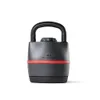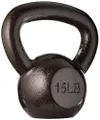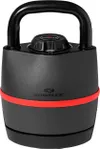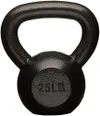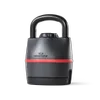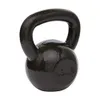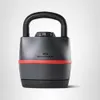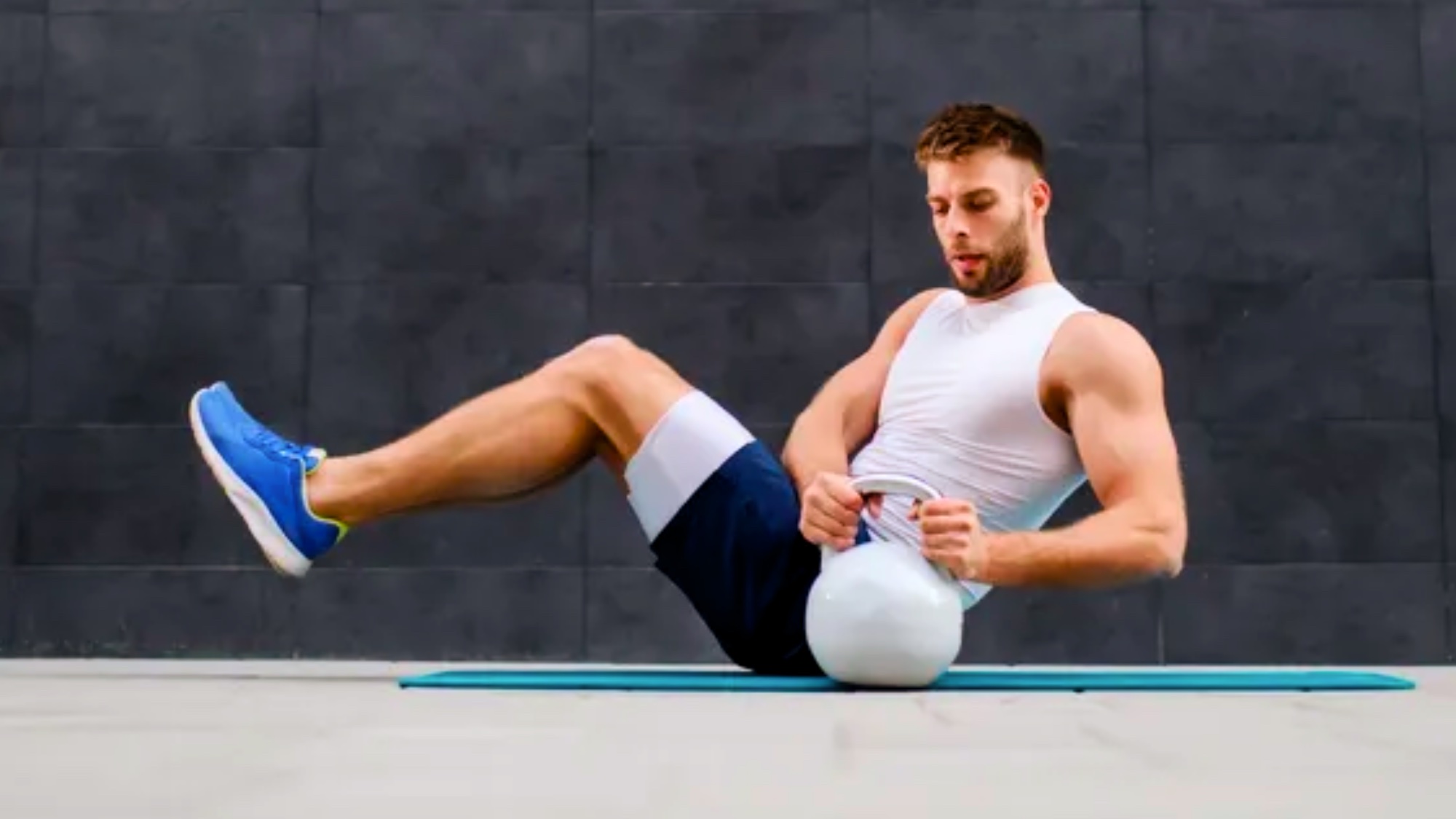
We’ve got three seated ab exercises to strengthen your core and hips using one kettlebell. You don’t need the best gym machines for building abs to do the workout, just a medium to heavy weight and your exercise mat.
Kettlebells are effective conditioning tools for building muscle and strength in your upper and lower body and core, and as long as you learn how to hold a kettlebell properly and keep your form tight, bells are endlessly fun to work with.
Whether you’re new to kettlebells and currently looking for one of the best kettlebells for weightlifting, or a seasoned pro, these seated ab exercises will fire up your core and blast multiple muscle groups at once.
Do seated ab exercises work?
If you’re wondering — how can I work my abs while sitting? There are many ways to use seated ab workouts to build a stronger core. The routine below takes just 15 minutes to complete, and you can use one or two kettlebells depending on whether you prefer dual or single loading.
Seated kettlebell exercises are some of my top go-to’s when training clients. Sitting removes your legs from the equation, which means they can’t help drive or take over the movement, increasing activation in the working muscles during core exercises.
Although most standing ab exercises technically require greater muscle activation, coordination and stability, you can still improve functional fitness by performing seated exercises and strengthening your core with weights can improve posture, balance, and spine health.
What are the 3 kettlebell seated ab exercises?
Here they are.
Get instant access to breaking news, the hottest reviews, great deals and helpful tips.
Seated kettlebell woodchop
Start by sitting on a chair or your bum. Imagine a piece of string emerging from the crown of your head and pulling your torso upward — sit with a tall spine without hunching or arching your back or collapsing forward.
Engage your core by gently squeezing your stomach. Hold a kettlebell in both hands in front of your stomach. Drive it diagonally just above the right side of your head with your elbows bent, pause, then draw the weight diagonally downward to just outside your left hip. Continue for reps, then switch sides.
We’ve already broken down the fundamentals of the weighted woodchop, but you'll want to elevate your body on the chair to give yourself more range of motion (and work muscles for longer). If you sit on the floor, you could lift your legs into the air to make the move harder.
Kettlebell seated leg lifts
Leg lifts torch the abs and hip flexors, activate the lower back and work your legs without them taking over the move. Position a kettlebell in front of you and sit on your mat. Extend both legs to one side of the bell, then engage your core and slightly lean back.
Keep your chest proud, back flat, and shoulders relaxed away from your ears. You can bring your hands to your hips, behind your head, or place them on the floor next to your hips for extra support.
With control, lift both legs and bring them over to the other side of the bell an inch away from the floor. Lift your legs again, over the bell, to the other side. Continue for reps without collapsing into your back or touching the floor with your feet, and bend your knees if the exercise is too difficult at first.
Kettlebell seated Pallof press (legs extended)
The Pallof press is a genius and understated core exercise that requires stability and control and hits the obliques and deeper core muscles (called the transverse abdominis).
Typically, the press variation is an anti-rotation exercise, so you’d use a cable machine or resistance band with an anchor point that you can drive against while you perform the pressing motion. The kettlebell Pallof press works slightly differently.
To do it, start seated in a chair or on the floor with your legs extended for an advanced variation. Again, imagine a string pulling you upward and lengthening the spine. Engage your stomach and relax your shoulders. If sitting on the floor, try to press your legs into the mat beneath you. Maintaining this position, hold a kettlebell close to your chest with elbows bent, then push the kettlebell away from you and extend both arms at shoulder height.
Hold for several seconds, then return to the starting position. Move with control, and challenge yourself by holding the weight extended away from you for longer. If you want to use other equipment, it's worth learning how to do the Pallof press in the standard variation as well.
Try this 3-move kettlebell seated ab workout:
Once you’re familiar with the moves, give this workout a try.
AMRAP (As Many Rounds As Possible) x 15 minutes:
- Kettlebell seated woodchop x 20 reps (10 per side)
- Kettlebell seated leg lifts x 20 reps
- Kettlebell Pallof press x 20 reps
Trainer tips

Sam is a trainer and senior fitness writer at Tom's Guide.
Begin with the woodchops by completing 10 reps per side, then move to the leg lifts and finally the Pallof press — each for 20 reps. Complete as many rounds as you can in 15 minutes. Take rest when you need it, but try to lift a weight that allows you to perform 10 reps unbroken and finish each set of 20 reps in no more than three separate attempts.
For example, if you can’t finish the Pallof press without stopping after every 5 reps, then you’re lifting too heavy for this workout.
Avoid cruising through the reps by choosing a very light weight and ensure the last few reps of each exercise are challenging to complete. You could use this as a core finisher or a standalone workout. Just remember to dial into the intensity that suits you and your fitness levels. As guidance, we completed this session using a 12kg weight.
More from Tom's Guide
- 4 strength exercises that sculpt your glutes and build a strong core without ab exercises
- Forget burpees — build muscle all over with one kettlebell and these four moves
- I tried the kettlebell viper press every day for a week, and the results were surprising

Sam Hopes is a level 3 qualified trainer, a level 2 Reiki practitioner and fitness editor at Tom's Guide. She is also currently undertaking her Yoga For Athletes training course.
Sam has written for various fitness brands and websites over the years and has experience across brands at Future, such as Live Science, Fit&Well, Coach, and T3.
Having coached at fitness studios like F45 and Virgin Active and personal trained, Sam now primarily teaches outdoor bootcamps, bodyweight, calisthenics and kettlebells.
She also coaches mobility and flexibility classes several times a week and believes that true strength comes from a holistic approach to training your body.
Sam has completed two mixed doubles Hyrox competitions in London and the Netherlands and finished her first doubles attempt in 1:11.


